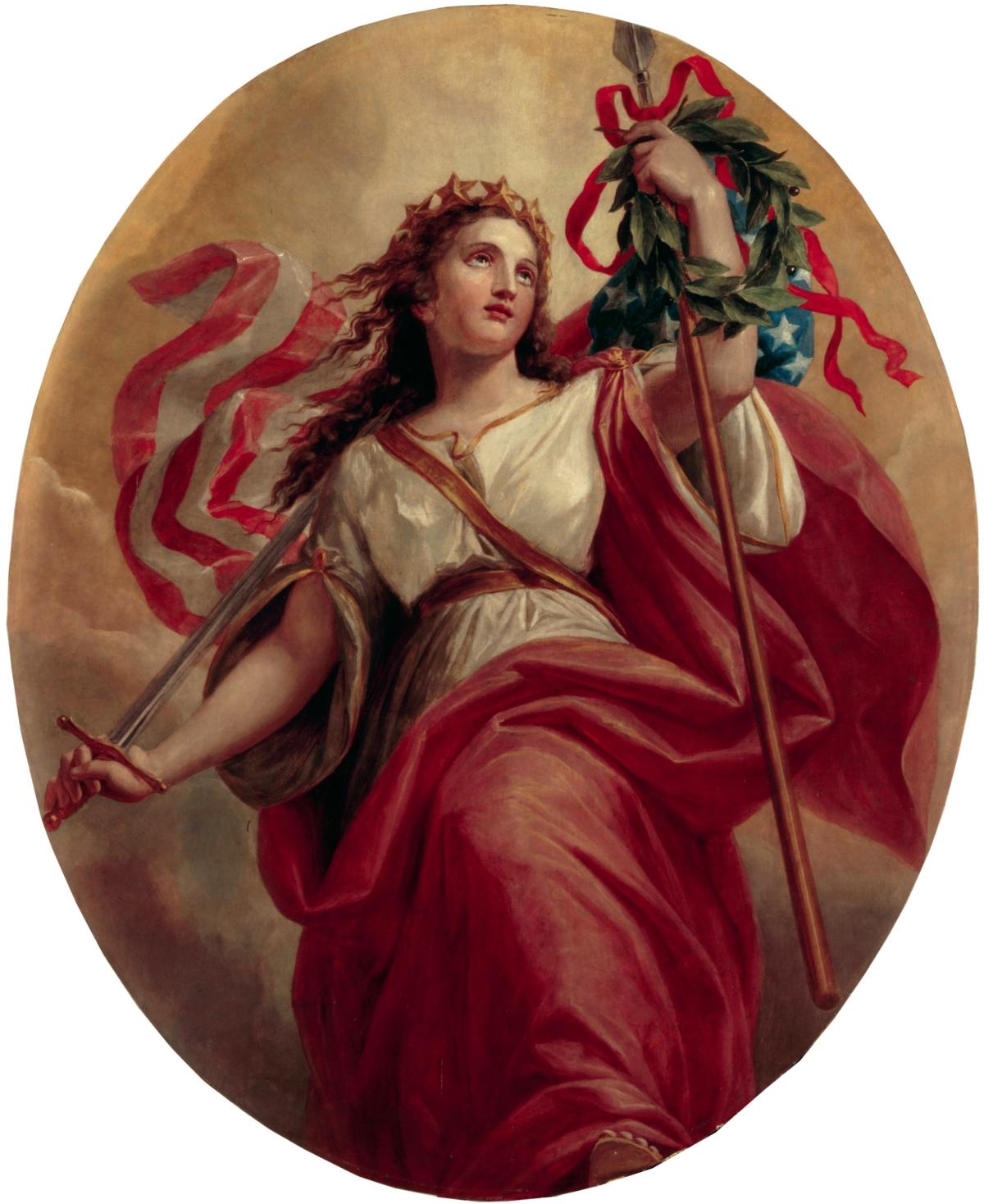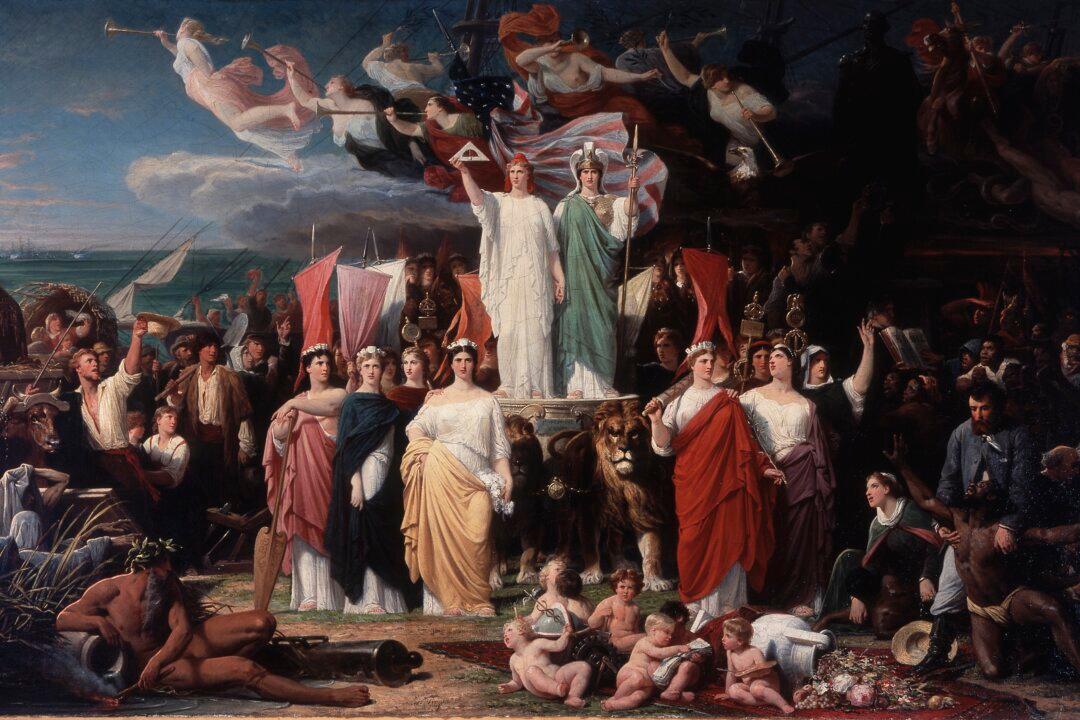When Ulysses S. Grant entered the president’s office in 1869, echoes of the Civil War tensions that he helped to resolve still reverberated in his mind—and in the nation at large. In response, he commissioned a set of paintings to represent the Union’s indivisibility and to symbolize the nation’s post-war recovery.

“Liberty” by Constantino Brumidi is mounted on the ceiling of the White House entrance hall. White House Historical Association. Public Domain





